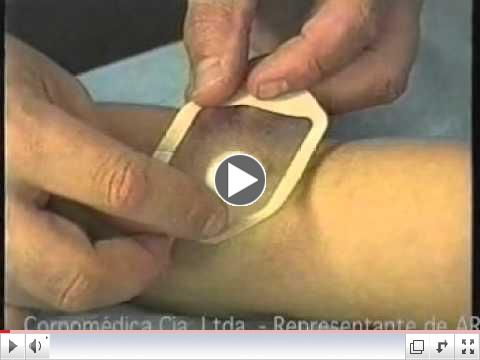|
Are laparoscopic procedures safe for children with Congenital Heart Disease (CDH)?
| |
A retrospective revue of 111 children (median age 2.5 mths) with CDH who underwent a laparoscopic procedure was analyzed for patient demographics, operative details, complications and 30 day mortality.
Infants with CDH may safely undergo a laparoscopic procedure without any deleterious effect or increase in mortality.
Source: Journal of Pediatric Surgery
|
|
Management of pain in the Emergency Department (ED)
| |
Historically, pain has not been managed optimally in the ED. A validated "pain score" was utilized to assess and compare the value of a "protocolized pain management program" used for ED patients undergoing a painful procedure to a matched "preprotocol group".
Following a painful procedure "protocolized pain management" reduces the memory of pain at the time, but does not appear to affect reported perceived pain by the parent or child at discharge.
Source: The American Journal of Emergency Medicine
|
|
Beneficial effects of polyunsaturated fatty acids in breast milk
| |
A study was undertaken to examine the relationship of cord plasma and breast milk docohexaenoic acid (DHA) concentrations to gestational length, birth size, growth, infant visual acuity and cognitive and motor development in 109 breast fed infants.
Higher cord (DHA) levels appear to be associated with more optimal visual, cognitive and motor development of 6 months of age. (Breast milk DHA levels were not related to any indicator measured).
Source: The Journal of Pediatrics
|
|
|
Umbilical venous catheterization (UVC) or percutaneous inserted central venous catheter (PICC) placement in the newborn
It appears that the risk of central line- associated blood stream infection is significantly greater when UVC's are utilized for greater than 7 days. This can be substantially reduced with the use of a PICC line. Source: The Journal of Pediatrics
VIDEO  | | Peripherally Inserted Central Venous Catheter |
Source: CorpoMedica ECU via YouTube
|
Causes of Stillbirth in the US
Stillbirth affects 1 in 160 pregnancies in the USA and rates are higher, and have remained so over the past 10 years than those found in other developed countries.
A population based study with surveillance of all stillbirths at or over 20 weeks of gestation was undertaken in 59 tertiary care and community hospitals categorizing causes of death.
A probably cause of death was found in 60.9% of cases and included; Obstetric conditions (29.3%), placental abnormalities (23 .6%), fetal genetic/structural abnormalities (10.4%), hyper tension (9.2%) and other maternal conditions (7.8%). Black and Hispanic women had a higher proportion of stillbirths due to obstetrical complications and infection.
Source: JAMA
|
Fresh Frozen Plasma (FFP) use in Children's Hospitals
A retrospective cohort study was undertaken from a database which delivered 3,252,149 recorded admissions for a variety of conditions, procedures and patient population, to examine the use of FFP in USA pediatric hospitals. FFP was most commonly used in infants less than 1 year of age (54%), critically ill children (70%), and those with heart disease (34%).
FFP continues to be commonly used in children in spite of expert recommendations which highlight its lack of efficacy in many clinical situations.
Source: The Journal of Pediatrics
|
|
For More Information
Contact the Editor
Visit Us on the Web
Digital Branding & Underwriting Opportunities
With a circulation of over 4,000, Updates in Pediatrics offers an excellent opportunity to promote your brand at affordable rates. Please contact Jeff Herschler to learn more.
|
|
|